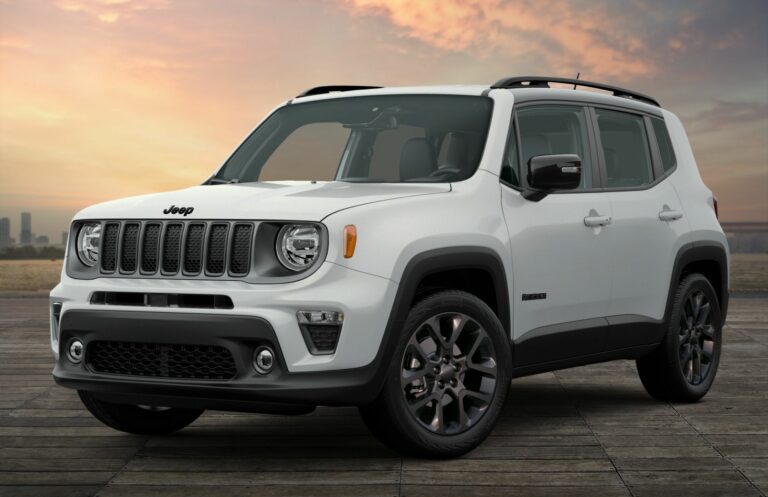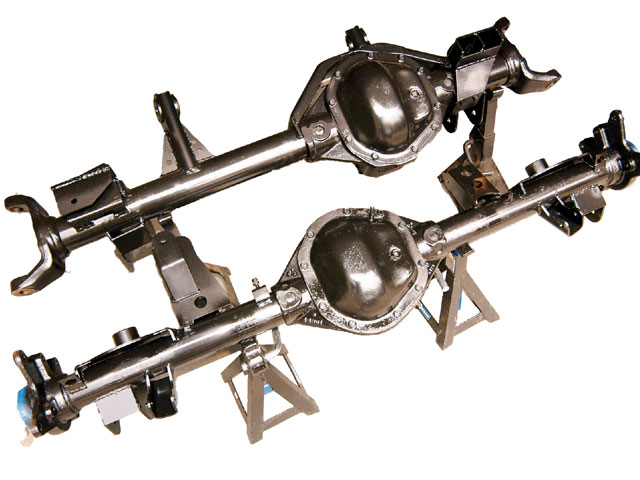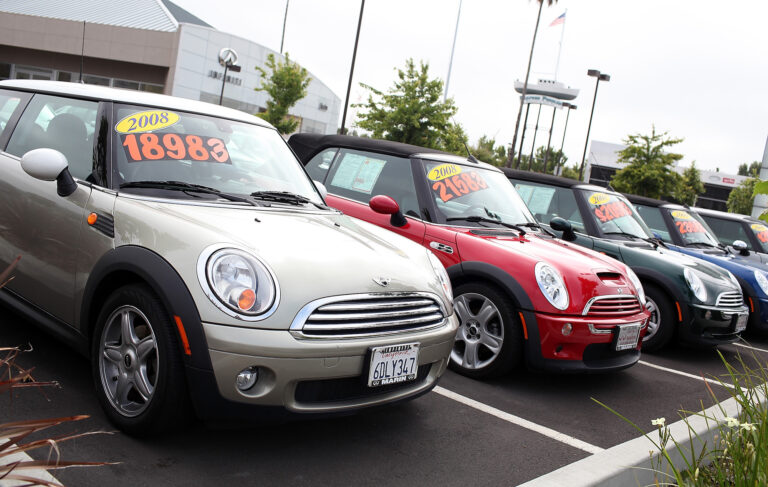93 Jeep Grand Cherokee: A Deep Dive into the Iconic ZJ
93 Jeep Grand Cherokee: A Deep Dive into the Iconic ZJ jeeps.truckstrend.com
The year 1993 marked a significant turning point for Jeep, ushering in a new era of capability and refinement with the introduction of the Jeep Grand Cherokee (ZJ). This wasn’t just another SUV; it was a statement. Designed to replace the beloved but aging XJ Cherokee, the 93 Grand Cherokee brought a level of luxury, comfort, and on-road manners previously unseen in a Jeep, all while stubbornly refusing to compromise on the legendary off-road prowess that defined the brand. For many, the 93 Grand Cherokee represents the perfect blend of classic Jeep ruggedness and modern convenience, making it a highly sought-after vehicle even three decades later. Whether you’re a seasoned off-roader, a classic car enthusiast, or simply looking for a robust and affordable SUV, understanding the nuances of the 93 ZJ is essential.
A New Era of Grandeur: The ZJ Genesis
93 Jeep Grand Cherokee: A Deep Dive into the Iconic ZJ
The development of the first-generation Grand Cherokee, internally codenamed "ZJ," was a pivotal project for Chrysler, which owned Jeep at the time. The goal was clear: create a more upscale, comfortable, and family-friendly SUV that could compete with the burgeoning luxury SUV market, yet retain the core DNA of a true Jeep. Launched dramatically by driving through a plate-glass window at the 1992 Detroit Auto Show, the 1993 Grand Cherokee immediately captured attention.
It departed from the XJ’s leaf-spring rear suspension, opting for a more comfortable and articulate Quadra-Coil suspension system, a significant upgrade. Its UniFrame construction, integrating the body and frame into a single unit, provided a robust and safe platform. The ZJ was designed from the ground up to be a more refined vehicle, offering a smoother ride, quieter cabin, and more luxurious interior appointments without sacrificing its ability to conquer challenging terrain.
Models and Trims: Decoding the ZJ Lineup
For its inaugural year, the 1993 Grand Cherokee was available in several distinct trim levels, each catering to different preferences and budgets:
- Laredo: This served as the entry-level model but was far from basic. It offered standard features like power windows and locks, air conditioning, and a respectable interior. It was a comfortable daily driver with full Jeep capability.
- Limited: The flagship model, the Limited trim was designed for luxury. It boasted leather upholstery, power seats, automatic climate control, a premium sound system, and often came with the more powerful V8 engine as standard or an option. Chrome accents and unique styling cues differentiated it from the Laredo.
- Grand Wagoneer: A short-lived but memorable trim, the 1993 Grand Wagoneer was a super-luxury variant based on the Limited, featuring distinctive woodgrain paneling on the exterior and an even more opulent interior. It came exclusively with the 5.2L V8 engine.

Engine Options:
- 4.0L High Output (HO) Inline-Six (I6): This legendary engine, inherited from the XJ Cherokee, produced 190 horsepower and 225 lb-ft of torque. Renowned for its bulletproof reliability, simple design, and ample low-end torque, it remains a favorite among enthusiasts for its longevity and ease of maintenance.
- 5.2L V8 (318 Magnum): Offering a significant power boost with 220 horsepower and 285 lb-ft of torque, the V8 was aimed at those desiring more acceleration and towing capability. While more powerful, it also consumed more fuel and had a slightly more complex cooling system.

Transmission and Transfer Cases:
All 1993 Grand Cherokees came with an automatic transmission. The specific model depended on the engine:
- AW4 (Aisin-Warner): Paired with the 4.0L I6, this 4-speed automatic is known for its durability and smooth shifts.
- 46RH (Chrysler): Paired with the 5.2L V8, this 4-speed automatic is also robust but requires proper maintenance.

Crucially, the Grand Cherokee offered a choice of advanced 4×4 systems:
- NP231 Command-Trac: A part-time 4×4 system, offering 2WD, 4-High Part-Time, and 4-Low Part-Time. Ideal for off-road use but not for dry pavement in 4WD.
- NP242 Selec-Trac: A revolutionary system allowing for full-time 4WD, 2WD, 4-High Part-Time, and 4-Low Part-Time. This provided the flexibility of full-time AWD for inclement weather on pavement, plus the low-range capability for serious off-roading.
- NP249 Quadra-Trac: This was a full-time 4WD system only, meaning it operated in 4WD continuously. It featured a viscous coupling that automatically distributed torque between the front and rear axles. While convenient for snow and wet roads, the viscous coupler can wear out and is less desirable for serious off-roading compared to the other options.
Key Features and Innovations: Beyond the Basics
The 93 Grand Cherokee was packed with features that set it apart:
- Quadra-Coil Suspension: This coil-spring suspension at all four corners vastly improved ride comfort and wheel articulation compared to leaf springs, making it more capable off-road and more pleasant on-road.
- UniFrame Construction: A single, robust unitized body and frame design provided exceptional rigidity, safety, and reduced noise, vibration, and harshness (NVH).
- Advanced Interiors: Depending on the trim, features included power everything, heated mirrors, automatic climate control, cruise control, and an overhead console with a compass and temperature display.
- Safety: For its time, the ZJ offered significant safety features including a standard driver’s side airbag and available 4-wheel anti-lock brakes (ABS).
- Towing Capacity: With the 5.0L V8, the 93 ZJ could tow up to 6,500 pounds, making it a capable workhorse for trailers and boats.
Driving the Legend: On-Road and Off-Road Prowess
On the road, the 93 Grand Cherokee offered a remarkably smooth and controlled ride for an SUV of its era. The coil-spring suspension soaked up bumps, and the refined interior provided a quiet cabin. The 4.0L I6 delivered adequate power for daily driving, while the 5.2L V8 transformed it into a more spirited performer, especially for highway merging and towing.
Off-road, the ZJ truly shined. Its solid axles, good ground clearance, and excellent approach/departure angles, combined with the capable 4×4 systems, allowed it to tackle challenging trails with ease. The short wheelbase and ample articulation made it surprisingly nimble in tight situations. It quickly became a favorite among the off-road community, proving that luxury didn’t have to mean sacrificing capability.
Common Issues and Maintenance Considerations
While robust, the 93 Grand Cherokee is now a vintage vehicle, and like any older car, it has its quirks and common issues to be aware of:
- "Death Wobble": Perhaps the most infamous ZJ issue. This is a violent, uncontrolled shaking of the front end that occurs at certain speeds after hitting a bump. It’s usually caused by worn out front suspension components like track bar bushings, tie rod ends, control arm bushings, or ball joints. It’s fixable but requires diligent diagnosis and quality parts.
- Oil Leaks: The 4.0L I6 is known for minor oil leaks, particularly from the rear main seal and valve cover gasket. These are generally not catastrophic but should be monitored.
- Cooling System Issues (especially V8): The 5.2L V8 runs hotter, making its cooling system components (radiator, water pump, fan clutch) prone to failure. Regular coolant flushes and monitoring are crucial. The blend door for the HVAC system can also break, leading to inconsistent heating/cooling.
- Transmission Issues: While generally reliable, neglected fluid changes can lead to issues with solenoids or overall transmission health.
- Electrical Gremlins: Age can bring about minor electrical issues, such as power window motor failures, faulty dashboard gauges, or issues with the keyless entry system.
- Rust: Like many vehicles of its age, rust can be a significant concern, especially in areas where road salt is used. Check the rocker panels, floorboards, frame rails, and suspension mounting points thoroughly.
- NP249 Viscous Coupler Failure: On models with the Quadra-Trac (NP249) transfer case, the viscous coupler can wear out, leading to binding in turns or transfer case damage. A common fix is to swap to an NP242 or NP231.
Practical Maintenance Advice:
- Regular Fluid Changes: Engine oil, transmission fluid, transfer case fluid, differential fluid – adhere to or exceed factory recommendations.
- Cooling System Overhaul: If buying a ZJ, especially a V8, consider a preemptive overhaul of the cooling system.
- Suspension Inspection: Regularly inspect all front-end components for wear to prevent death wobble.
- Rust Prevention: Wash the underside frequently, especially after winter driving. Address any surface rust promptly.
- Listen and Feel: Pay attention to new noises, vibrations, or changes in driving feel.
Buying a 1993 Grand Cherokee Today: What to Look For
Purchasing a 93 ZJ today can be a rewarding experience, but careful inspection is paramount:
- Rust, Rust, Rust: This is your number one priority. Check the frame rails, rocker panels, floorboards, and around suspension mounting points. Surface rust is manageable; structural rust is a deal-breaker.
- Engine Health: Listen for knocking, ticking, or unusual noises. Check for excessive smoke from the exhaust. Look for major oil leaks.
- Transmission & Transfer Case: Test all gears, including reverse. Ensure smooth shifts. For 4×4 models, engage all 4WD modes (2Hi, 4Hi, 4Lo, Full-Time if applicable) and drive briefly. Listen for clunks or binding.
- Suspension & Steering: Look for signs of "death wobble" during a test drive. Check for worn ball joints, tie rods, track bar, and control arm bushings. Any looseness in the steering indicates worn components.
- Cooling System: Check for leaks, especially around the radiator and hoses. Ensure the fan operates correctly.
- Electricals: Test all lights, power windows, locks, radio, and HVAC controls.
- Interior Condition: Assess the seats, headliner, and dashboard for cracks or excessive wear.
- Service History: Ask for any maintenance records. A well-documented vehicle is always a better bet.
- Pre-Purchase Inspection (PPI): If you’re serious about a vehicle, invest in a professional PPI by a mechanic familiar with Jeeps.
Customization and Aftermarket Support
One of the greatest appeals of the 93 Grand Cherokee is its incredible aftermarket support. From mild to wild, you can customize a ZJ to suit any adventure:
- Lift Kits: Ranging from 2-inch budget boosts to 6+ inch long-arm kits for serious off-roading.
- Armor: Steel bumpers, rock sliders, and skid plates protect vital components on the trail.
- Engine Performance: Intake and exhaust upgrades, tuning, and even engine swaps are common.
- Axle Upgrades: For heavy off-road use, swapping out stock axles for stronger units is popular.
- Interior Refinements: Upgrading audio systems, adding storage solutions, or restoring original components.
The ZJ community is vast and active, providing a wealth of knowledge, advice, and camaraderie for owners looking to maintain or modify their Grand Cherokees.
Price Table: 1993 Jeep Grand Cherokee Estimated Value
Please note that these are estimated price ranges. Actual prices can vary significantly based on mileage, specific options, maintenance history, geographical location, and current market demand. A restored, low-mileage Limited V8 in a desirable color will command a premium. Conversely, a high-mileage Laredo with significant rust will be at the lower end.
| Trim Level | Engine | Transfer Case | Condition: Poor/Fair ($) | Condition: Good ($) | Condition: Excellent/Restored ($) |
|---|---|---|---|---|---|
| Laredo | 4.0L I6 | NP231 / NP242 | $1,000 – $2,500 | $2,500 – $4,500 | $4,500 – $8,000+ |
| Laredo | 5.2L V8 | NP231 / NP242 | $1,200 – $2,800 | $2,800 – $5,000 | $5,000 – $9,000+ |
| Limited | 4.0L I6 | NP249 / NP242 | $1,500 – $3,000 | $3,000 – $5,500 | $5,500 – $10,000+ |
| Limited | 5.2L V8 | NP249 | $1,800 – $3,500 | $3,500 – $6,500 | $6,500 – $12,000+ |
| Grand Wagoneer | 5.2L V8 | NP249 | $2,500 – $5,000 | $5,000 – $9,000 | $9,000 – $15,000+ |
Note: "Excellent/Restored" implies minimal to no rust, fully functional systems, original or period-correct parts, and often lower mileage. "Poor/Fair" indicates significant cosmetic flaws, potential mechanical issues requiring immediate attention, and/or considerable rust.
Frequently Asked Questions (FAQ) about the 1993 Jeep Grand Cherokee
Q: Is the 1993 Grand Cherokee reliable?
A: Yes, generally. The 4.0L I6 engine is famously reliable. Like any 30-year-old vehicle, regular maintenance is key, and addressing common issues like "death wobble" and cooling system health will ensure longevity.
Q: Which engine is better, the 4.0L I6 or the 5.2L V8?
A: It depends on your priorities. The 4.0L I6 is renowned for its simpler design, lower maintenance costs, and exceptional long-term reliability. The 5.2L V8 offers more power and towing capacity but comes with slightly higher fuel consumption and potentially more complex cooling system issues. For serious off-roading, the I6’s torque characteristics are excellent.
Q: Does it get good gas mileage?
A: No, by modern standards. The 4.0L I6 typically gets 15-18 MPG combined, while the 5.2L V8 is usually in the 12-15 MPG range.
Q: Is it good off-road?
A: Absolutely! The 93 Grand Cherokee, especially with the NP231 or NP242 transfer case, is highly capable off-road due to its solid axles, good ground clearance, and robust drivetrain. It’s a popular choice for trail enthusiasts.
Q: What is "death wobble" and how do I fix it?
A: Death wobble is a violent, uncontrollable shaking of the front end. It’s almost always caused by worn or loose steering and suspension components, most commonly the track bar, tie rod ends, and control arm bushings. Fixing it involves systematically replacing worn parts.
Q: Are parts still available for the 1993 Grand Cherokee?
A: Yes, parts are widely available. Many components are shared with other popular Jeep models, and the aftermarket is robust, making it relatively easy to find replacement parts and upgrade components.
Q: Is the 1993 Grand Cherokee a good first vehicle for off-roading?
A: Yes, it’s an excellent choice. They are affordable to buy, capable out of the box, have extensive aftermarket support for upgrades, and a large community for advice and help.
Conclusion
The 1993 Jeep Grand Cherokee, the venerable ZJ, stands as a testament to Jeep’s enduring legacy of capability blended with evolving comfort. It was a pioneering vehicle that successfully bridged the gap between rugged utility and everyday drivability, setting the stage for future generations of SUVs. Thirty years on, it remains a highly sought-after classic for its distinctive styling, robust construction, and undeniable off-road prowess.
Owning a 93 ZJ today is more than just having a vehicle; it’s joining a passionate community. While they require diligence in maintenance and awareness of their common quirks, the rewards—a capable off-roader, a unique daily driver, or a rewarding project vehicle—far outweigh the challenges. The 93 Grand Cherokee truly is a grand old dame of the SUV world, ready to tackle new adventures with the right owner.
![]()



